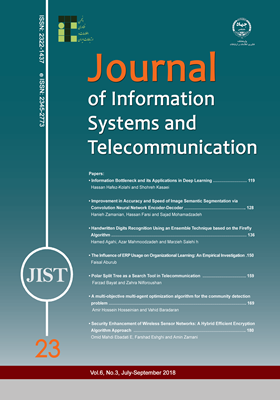-
-
List of Articles
-
Open Access Article
1 - Information Bottleneck and its Applications in Deep Learning
Hassan Hafez Kolahi Shohreh Kasaei -
Open Access Article
2 - Improvement in Accuracy and Speed of Image Semantic Segmentation via Convolution Neural Network Encoder-Decoder
Hanieh Zamanian Hassan Farsi Sajad Mohammadzadeh -
Open Access Article
3 - Handwritten Digits Recognition Using an Ensemble Technique Based on the Firefly Algorithm
Azar Mahmoodzadeh Hamed Agahi Marzieh Salehi -
Open Access Article
4 - The Influence of ERP Usage on Organizational Learning: An Empirical Investigation
Faisal Aburub -
Open Access Article
5 - Polar Split Tree as a Search Tool in Telecommunication
Farzad Bayat Zahra Nilforoushan -
Open Access Article
6 - A Multi-objective Multi-agent Optimization Algorithm for the Community Detection Problem
Amirhossein Hosseinian Vahid Baradaran -
Open Access Article
7 - Security Enhancement of Wireless Sensor Networks: A Hybrid Efficient Encryption Algorithm Approach
Omid Mahdi Ebadati Farshad Eshghi Amin Zamani
-
The rights to this website are owned by the Raimag Press Management System.
Copyright © 2017-2025







